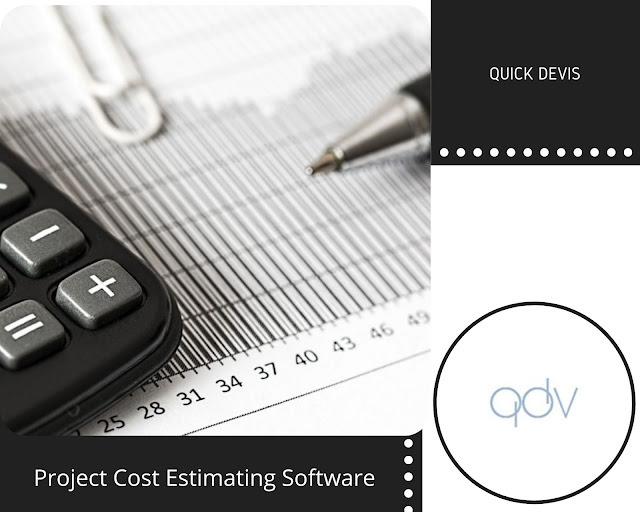How to Manage Cost Escalation in Construction Projects: Strategies for Staying on Track
The construction projects are a project, but to accompany them is a bag of problems. In regards to cost management, one of the biggest issues that are inherent in each construction project is the uncontrollable surge in cost that may pose an immense threat to cost regulations in projects. Shafi's paper has explained cost escalation, a situation whereby the actual cost of a construction project greatly exceeds the anticipated or estimated cost, as a major issue affecting construction projects, with 49% of such projects experiencing a cost overrun. Therefore, what can the construction managers do to ensure that costs are contained and the projects are estimated and delivered within a certain cost? There are techniques to avoid cost-runs and techniques to manage cost-escalation through the life-cycle of a project Let’s explore these next.
1. Understanding Why Cost Escalation Is Happening
The management of cost escalation begins with knowing why such costs exist. Some factors cannot be controlled, but others can be predicted. The factors that are normally associated with cost escalations include:
Material Price Increases: Steel and cement, among other building materials, may go up in price due to disrupted supply chains or changes in demand. These are common and usually without warning; thus, project costs can shoot up.
Labour Shortages and Wage Increases: With a tight labour market, construction companies are bound to face shortages in labour that are converted into high wages for the few available skilled orders. This is one cost area where expenses are likely to balloon.
Regulatory Changes: Sometimes unforeseen expenditures arise from new legislation, new building codes, or new environmental laws. Overnight changes in zoning and safety rules can send the whole project into a tailspin and become a significant item of expense.
Unforeseen Conditions: These occur when poor soil quality old foundations or hazardous materials are discovered that were otherwise not identified during the early inspections. Changes in project scope that were not forecasted can also lead to cost overruns.
By identifying these triggers, project managers can better prepare for them and minimise their impact on the budget.
2. How to Plan and Prevent Cost Escalation
Effective planning has been the key to mitigating cost escalation risks. First, make a detailed project budget covering not only direct costs but also contingencies for potential price increases. Some strategies could be:
Contingency budgets: proportion of the whole budget that people allocate for contingencies that are likely to occur. Depending on how complicated the project is, it should be around 5-10%. This means that with such a buffer, you can deal with any other unexpected incidences that befall you without jeopardising the whole project.
Fixed-Price Contracts: Always make fixed-price deals with your direct suppliers and subcontractors. This will 'lock' prices for materials and labour. It minimises the risk of cost escalation from price hikes.
Supplier Relationships: It will help you negotiate a better price and stable rate, even in times of market fluctuations. This would be beneficial in having more predictable material costs over time.
3. Regular Monitoring and Forecasting: Be One Step Ahead of the Game
As soon as your project is running, continuous tracking of the expenses is the key. It will enable you to spot early warning signs of cost escalation and get a grip on it before it turns into a snowballing affair. Here's how to do it:
Real-Time Expense Tracking: There is also no difficulty in controlling the actual spending against the set budget, using the available technologies in real time.
Forecasting: Regularly forecast remaining costs based on project progress. By predicting potential price increases or resource shortages, you can adjust plans proactively to manage escalating costs.
Risk Management Plans: Carry out risk management plans at regular intervals. You may identify causes of cost escalation through periodical risk assessment and control them by designing mitigation strategies.
4. Use of Technology to Predict and Control Cost Escalation
One of the best methods of controlling the cost escalation is through technology. Today, there are quite powerful tools that can help a construction manager better predict cost and track it efficiently. Advanced estimating tools are game-changers in the construction industry because they allow managers to
Real-Time Estimates: Real-time estimating will help you avoid price surprises later on in your project. With real-time data, you will make sure that your estimates have current market conditions to keep cost escalation from occurring at the start.
It integrates with Project Management Tools: When you connect your estimation tools with your project management software, you would get automatic tracking of changes that would forecast potential cost increases as the project goes ahead.
Access data analytics: It helps track the patterns and trends in the cost escalation process so that future price increases may be forecasted before they occur.
Conclusion:
It is very tough to manage cost escalation in construction projects, but still, with the proper strategy and tools, it can be fully achieved. Planning, monitoring, and the use of technology allow one to remain on top of possible problems and the cost implications they bring. With a reliable estimating tool, you are assured that it will impact your projects if you can produce an accurate forecast of costs besides tracking real-time cost monitoring. For you to stay within budget and avoid all the stress of cost escalation, use a state-of-the-art estimating tool in your next project.



Comments
Post a Comment